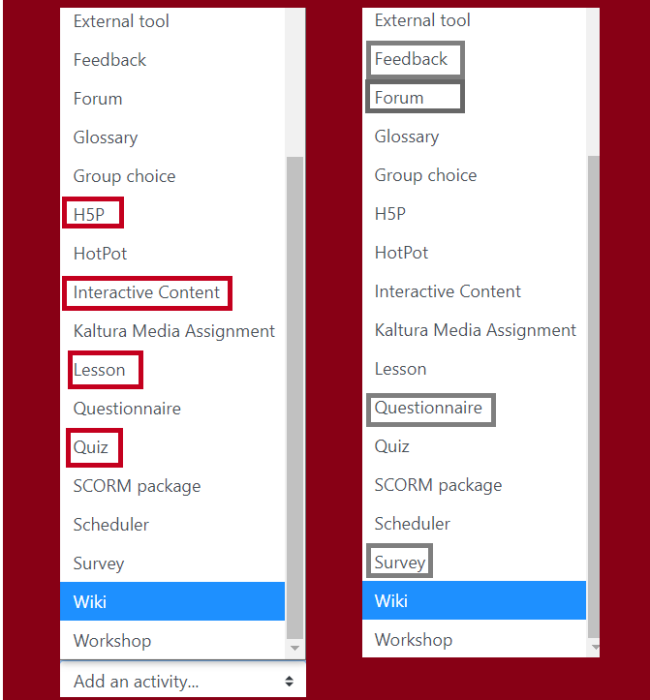Adding Efficiency to Grading Processes
Grading more efficiently
In the video below, Dr. Kristie Dukewich provides ten strategies for efficient grading. For a text summary of her ten strategies, view the text box below.
Dr. Dukewich’s strategies to reduce marking (and marking time)
Video summary:
- Mark holistically
- Use a marking rubric
- Use rubrics in Moodle to auto-calculate the grade.
- Use holistic marking rubrics for low-stakes assignments.
- Ask students to indicate that they want feedback on end-of-term assignments.
Strategies for Written Assignments
- Keep a master file of frequently used comments that may be re-used (with or without slight adaptation). While comments on students’ ideas and content are individual, many comments about structure, formatting, and repeated patterns of lower-order errors (e.g., grammar, mechanics) differ little from student to student. Consider writing master comments for frequently-given feedback, taking the time to provide a link to additional information or resources for students (e.g., a short Youtube video or Learning Aid). By creating this more comprehensive feedback once, you can increase efficiency in re-using these with minor modifications, while providing students with more comprehensive feedback than they otherwise might receive. Rather than putting effort into repeatedly writing these frequent comments, you can create space to offer more meaningful individualized feedback on students’ content and ideas.
- Avoid “copy-editing” student work. If minor errors are frequent, look for patterns, and comment on patterns rather than individual mistakes.
- Consider creating audio comments for students. Besides being efficient, this strategy also has the benefit of allowing students to hear your tone of voice, which can avoid misinterpretations of the tone of a written comment.
- Pick your battles (give feedback on 2-3 things that will improve performance).
- Provide global feedback (give feedback on common class patterns in-class).
- Post an answer key rather than providing individual feedback.
- Make time in-class for verbal feedback on group assignments.
- Use dictation software or voice recorded feedback
Strategies for Problem-Based Assignments
- Consider offering points to students for self-correcting incorrect responses. Rather than offering full corrections, students gain the opportunity to learn from correcting their work. More often than not, the revised submissions will be correct (Vanderbilt Center for Teaching and Learning).
- Grade one problem at a time across all submissions, rather than grading full assessments in sequence. This can also help to support consistency in grading.
- Provide feedback on errors that are frequent in a whole class in an in-class feedback session.
- Use automated grading tools within Moodle (see below for further details). This is particularly useful for lower-stakes and formative assessments.
Using Moodle Tools for Automated Grading
Some assignment types within Moodle can be graded automatically. While these assessments may take time to design, there is no need to spend time marking.
A few considerations for using automated grading:
- Question types that are best assessed in Moodle include multiple choice, true/false, and matching.
- Automated marking is generally based used for assessments at the lower levels of Bloom’s Taxonomy (i.e., tasks that involve remembering and understanding concepts). Well-constructed multiple choice questions (e.g., thoughtful scenarios, questions that involve comparison and contrast), can sometimes be effectively used for application and analysis questions. This can be done using H5P, Lessons, and the Quiz function in Moodle.
- Diagnostic and formative assessment can be conducted using the Feedback, Forum, Questionnaire, and Survey tools. (Adapted from Gillian Sudlow (2021). Faculty Teaching Excellence Learning Assessment Domain. Kwantlen Polytechnic University.)

Student messages that support efficient grading
Higher-quality assignments are often easier to grade than those where students have fallen short of assignment objectives. Consider the following strategies to help students submit higher-quality assignments:
- At the beginning of assignment process, encourage students to break down large assignments into their component parts and to create a realistic schedule for completing the assignment over several days or weeks.
- Encourage students to self-evaluate their assignment according to the rubric.
- Provide a checklist for students to consider the effort typically required to do quality work (see image to the right).

